Setting up a quarantine tank is important for maintaining the health of your aquarium community. The quarantine tank acts as a protective buffer, housing new fish or sick fish. This ensures that the rest of your aquatic inhabitants remain safe from potential diseases or parasites. This special tank allows you to monitor and treat any new fish for a period before introducing them to your main aquarium. This gives you peace of mind and safeguards the delicate ecosystem you have cultivated.
When you decide to add new fish to your collection, consider the quarantine tank your first line of defense. Not only does it provide an isolated environment for observation, but it also prevents the spread of illness if a new fish is carrying anything unseen. If any of your current fish show signs of illness, the quarantine tank is a secure place to administer treatment without affecting the others. It’s a simple yet effective measure that can significantly reduce the risk of losing all your fish to disease.
Crafting your quarantine setup doesn’t have to be complicated or expensive. It can be as simple as a clear plastic container with holes for air flow, but make sure it has the essentials: a filter, heater, and places for the fish to hide. Using equipment and water from an already set up aquarium can make the cycling process quicker. With this proactive approach, your main tank will thrive, and your fish will enjoy a happy, healthy life under your care.
Jump To Section
- Understanding the Need for a Quarantine Tank
- Selecting the Right Quarantine Tank
- Setting Up Your Quarantine Tank
- Maintaining Optimal Conditions
- Introducing New Fish to the Quarantine Tank
- Monitoring and Treating Health Issues
- Transitioning Fish Back to the Main Aquarium
- Accessories for Fish Comfort and Security
- Understanding the Lifecycle of Pathogens
- Creating an Optimal Feeding Routine
- Common Mistakes to Avoid
Understanding the Need for a Quarantine Tank
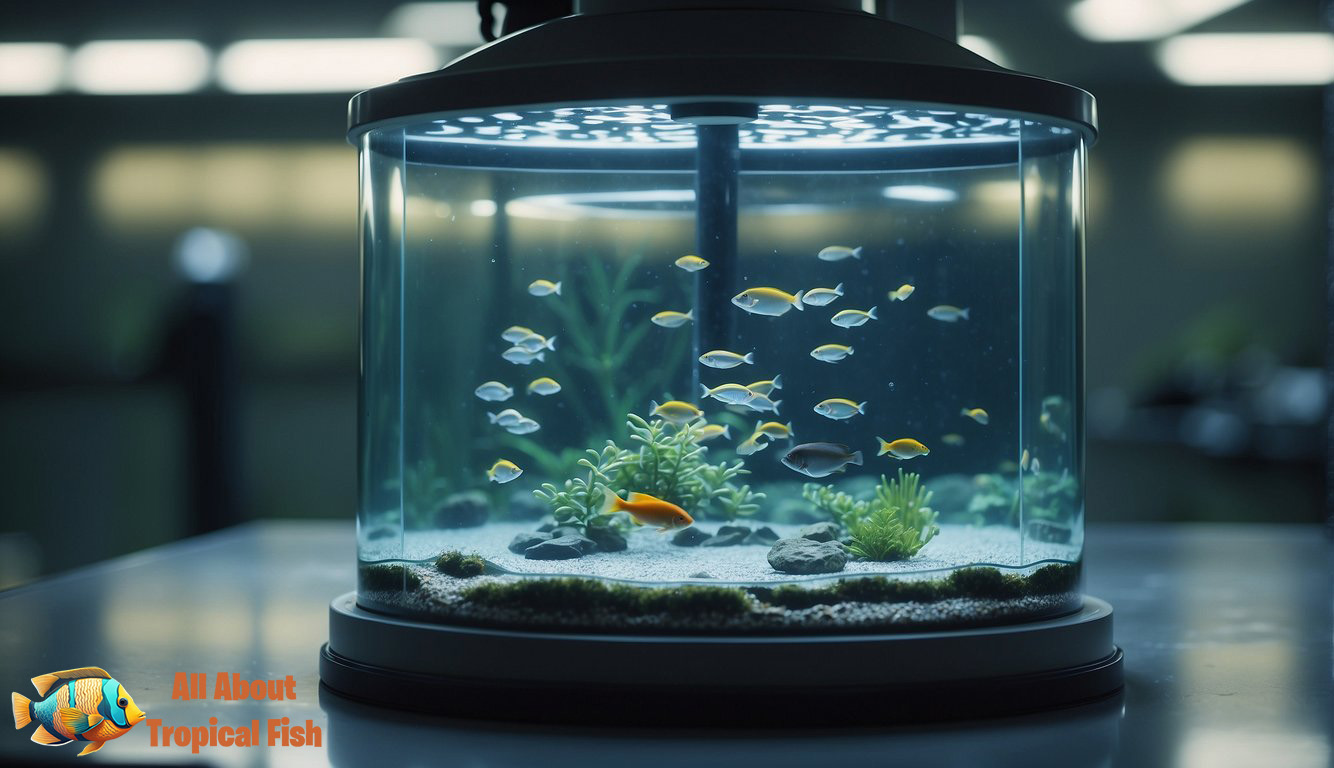
When you introduce new fish or need to care for sick ones, a quarantine tank is your go-to solution to prevent disease spread and manage fish health effectively.
Preventing Disease Spread
A quarantine tank acts as a protective barrier to your main tank. It prevents the transmission of diseases from new or sick fish to the healthy residents of your aquarium. By isolating fish, you significantly reduce the risk of introducing fish disease into your main tank, which could have otherwise led to widespread health issues.
Protecting New and Existing Fish
Your new fish often require a transition period to adjust to their new environment. A quarantine tank minimizes the stress new fish experience by providing them a separate space before joining the main population. Similarly, it safeguards your existing fish from potential stress and disease that can be caused by new additions.
Benefits of Isolated Observation
Observing your fish in a quarantine tank allows you to closely monitor their health and behavior without the distractions of a fully stocked main tank. This isolation is important to accurately diagnose and treat any fish disease. It also helps in ensuring that the rest of your aquatic community remains healthy. During this time, you can observe signs of stress or illness that may otherwise go unnoticed.
Selecting the Right Quarantine Tank
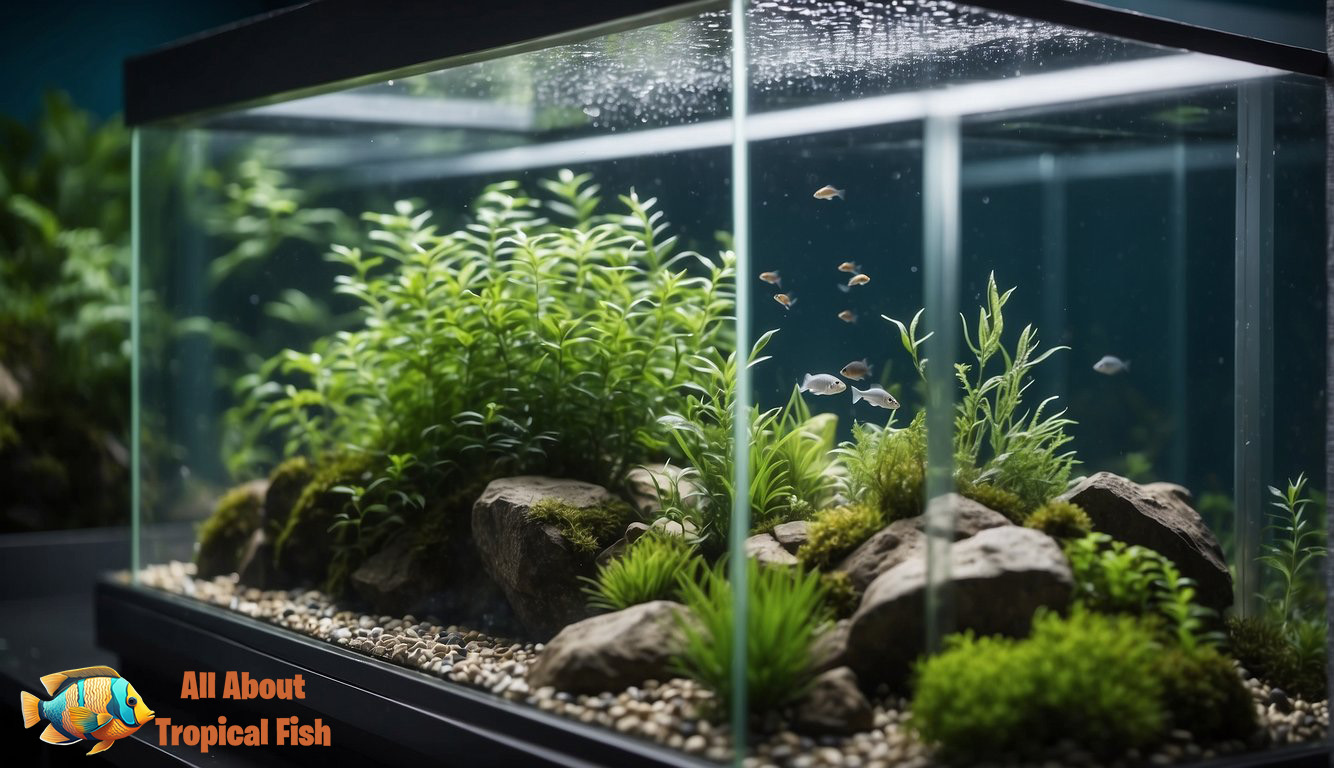
Before introducing new fish to your main aquarium, make sure to have a quarantine tank ready. This ensures the health of your existing aquatic life isn’t compromised. Here’s what you need to consider to select the right one.
Tank Size and Location
Tank Size:
The size of your quarantine tank depends on the type and number of fish you plan to quarantine. Generally, a 10-20 gallon tank is sufficient for small to medium fish. If you expect to quarantine larger fish or multiple fish at once, you may require a larger tank, possibly 30-40 gallons.
Location:
Select a location that’s away from direct sunlight and high traffic to reduce stress for the fish. Ensure the spot is near power outlets for equipment, and there’s enough space around the tank for maintenance.
Choosing Suitable Equipment
Filtration:
A simple sponge filter seeded with beneficial bacteria from your main tank can provide biological filtration critical for the health of the tank.
Heater:
Maintain a consistent temperature appropriate for the fish species you’re quarantining.
Air Pump:
An air pump with an airstone will help keep oxygen levels up and aid in water circulation.
Remember, the equipment doesn’t need to be as complex as your main tank but must support the well-being of the fish temporarily housed in it.
Setting Up Your Quarantine Tank
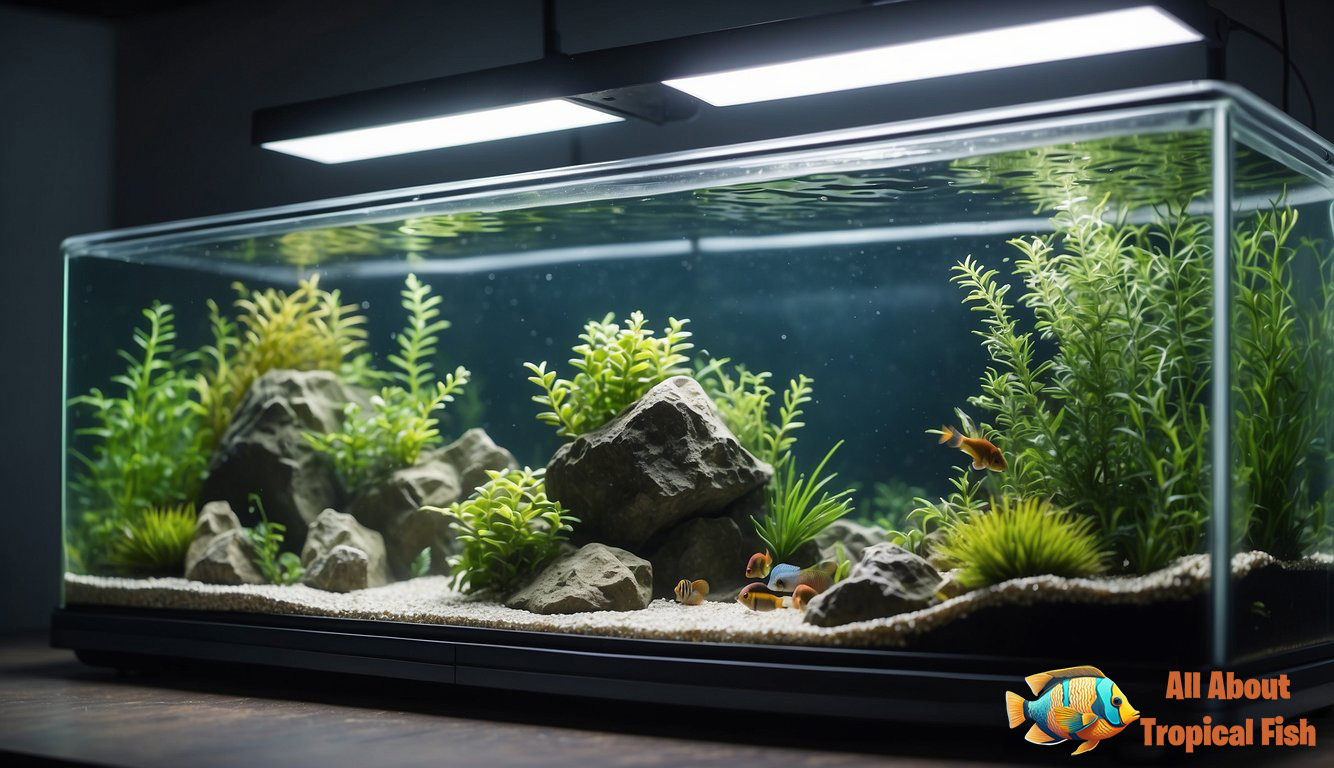
Let’s guide you through assembling a safe and efficient quarantine environment.
Step by Step Setup Guide
- Evaluate Size: Choose a small aquarium, typically 10-20 gallons, based on the size and number of your fish.
- Choose a Location: Place your aquarium in a quiet, low-traffic area away from direct sunlight and excessive noise.
- Install a Lid: Secure a lid, mesh top, or eggcrate to prevent fish from jumping out.
- Prepare the Bottom: Consider a bare-bottom approach for easy cleaning, or if preferred, add a thin layer of substrate.
- Position Decor: Add minimal decor such as PVC pipes or safe ornaments to provide shelter and reduce stress for the fish.
Water Conditioning and Cycling
- Water Conditioner: Add a water conditioner to dechlorinate tap water and neutralize harmful chemicals.
- Cycling the Tank: Use a portion of water and filter media from your established aquarium to introduce beneficial bacteria. This step is crucial to manage ammonia and maintain a stable environment.
Adding Essential Equipment
- Heater: Install an aquarium heater suitable for your tank size to maintain a consistent temperature.
- Filter: Set up a small hang-on-back filter or sponge filter, adequate for your quarantine tank’s volume.
- Air Supply: Ensure proper air flow with airline tubing connected to an air stone or bubbler to oxygenate the water.
Maintaining Optimal Conditions
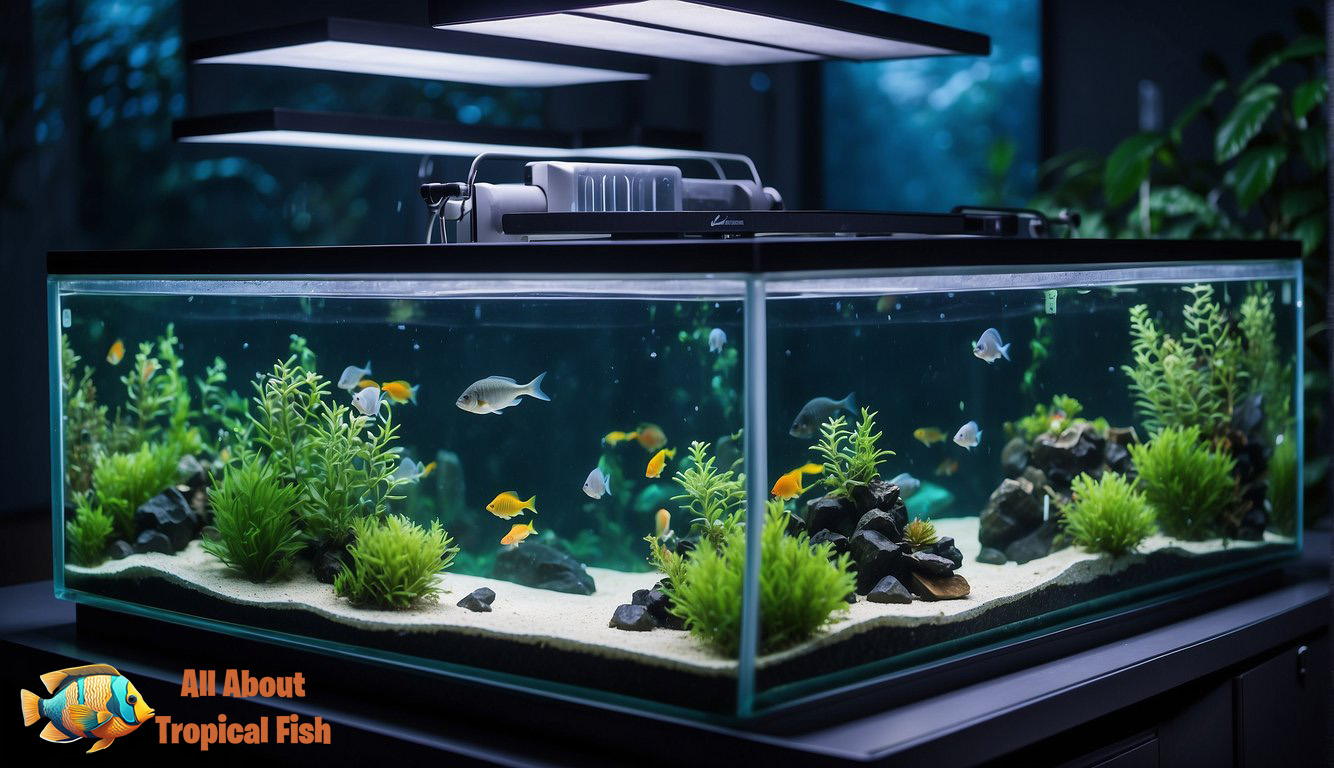
Ensuring the health of your fish in quarantine involves closely managing the environment they’re in. This means regulating the temperature and filtration, monitoring the water for toxic substances, and sticking to a regular cleaning schedule.
Temperature and Filtration Control
Your quarantine tank’s temperature should be stable and appropriate for the species you are keeping. Use a heater to maintain consistent water temperatures, and always double-check the setting with a thermometer to ensure accuracy. Filtration is equally vital to remove waste and promote the dispersal of beneficial bacteria. A sponge filter is often recommended as it offers both mechanical and biological filtration and is gentle enough for sick and stressed fish. Here’s a quick glance at the setup:
| Equipment | Purpose |
|---|---|
| Heater | Keep water at ideal temperature for your fish |
| Thermometer | Regularly check to ensure accurate temperature |
| Sponge filter | Filter out waste and host beneficial bacteria |
Monitoring Water Quality Levels
Maintaining high water quality is crucial in a quarantine setup. Use a test kit to regularly monitor parameters like ammonia, nitrite, nitrate, oxygen, and carbon levels. Any presence of ammonia or nitrite indicates a problem, as both are toxic to fish. Low oxygen levels should be addressed immediately, as they can cause stress and weaken the immune system. Regular testing helps avoid the outbreak of bacteria and parasites that can thrive in poor water conditions.
Regular Maintenance Schedule
Commit to a strict maintenance schedule to keep the water pristine. Change a portion of the water — typically 10-20% — each week, and more frequently if you’re administering a treatment. This helps in diluting any accumulated waste and maintaining the balance of beneficial bacteria in the water. Clean or replace sponge filters as needed, and always do so in accordance with the instructions of the treatment you’re using, as some treatments can disrupt the cycle established in the filter.
By attending to these aspects, you can provide a stable and healthy environment for your fish during the quarantine period.
Introducing New Fish to the Quarantine Tank
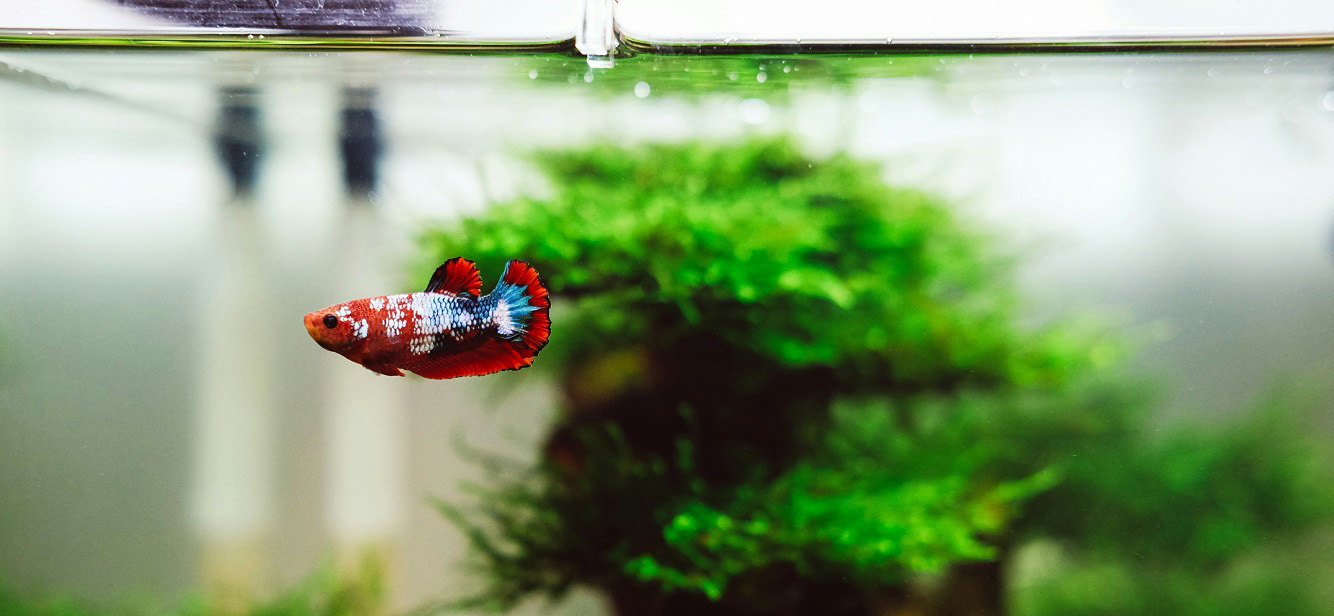
When you’re adding new fish to your quarantine tank, it’s critical to take the proper steps to make sure they transition safely into their new environment without undue stress. Keep a close eye on their behavior throughout the acclimation and transition process.
Acclimation Process
To start, acclimate your new fish by floating the sealed plastic bag they came in on the surface of the quarantine tank’s water. This method allows the fish to adjust to the new water temperature gradually. After about 15 minutes:
- Gently open the bag’s seal.
- Over the next 45 minutes, add small amounts of water from the quarantine tank to the bag every 5 minutes.
For invertebrates or scaleless fish, acclimation needs to be gentler due to their sensitivity. If you’re using treatments like Aquarium Solutions Ich-X or anti-parasitic medications in the quarantine tank, be particularly cautious as such substances can be too harsh for these creatures. With shrimp, always check that any medication is safe for invertebrates.
Managing Stress During Transition
Stress can heavily impact the immune system of your fish, potentially leading to sickness. To minimize stress during the transition:
- Maintain a dimly lit environment for the quarantine tank to provide a soothing atmosphere.
- Offer hiding places with neutral ornaments or plants so that new fish can feel secure.
Avoid introducing sick fish into the quarantine tank with healthy ones, as disease can spread rapidly. If you notice symptoms of illness, immediately isolate the affected fish and administer the appropriate treatments. In the case of scaleless fish, use medications that are labeled safe for them, as they are more susceptible to chemicals due to the absence of scales.
Monitoring and Treating Health Issues
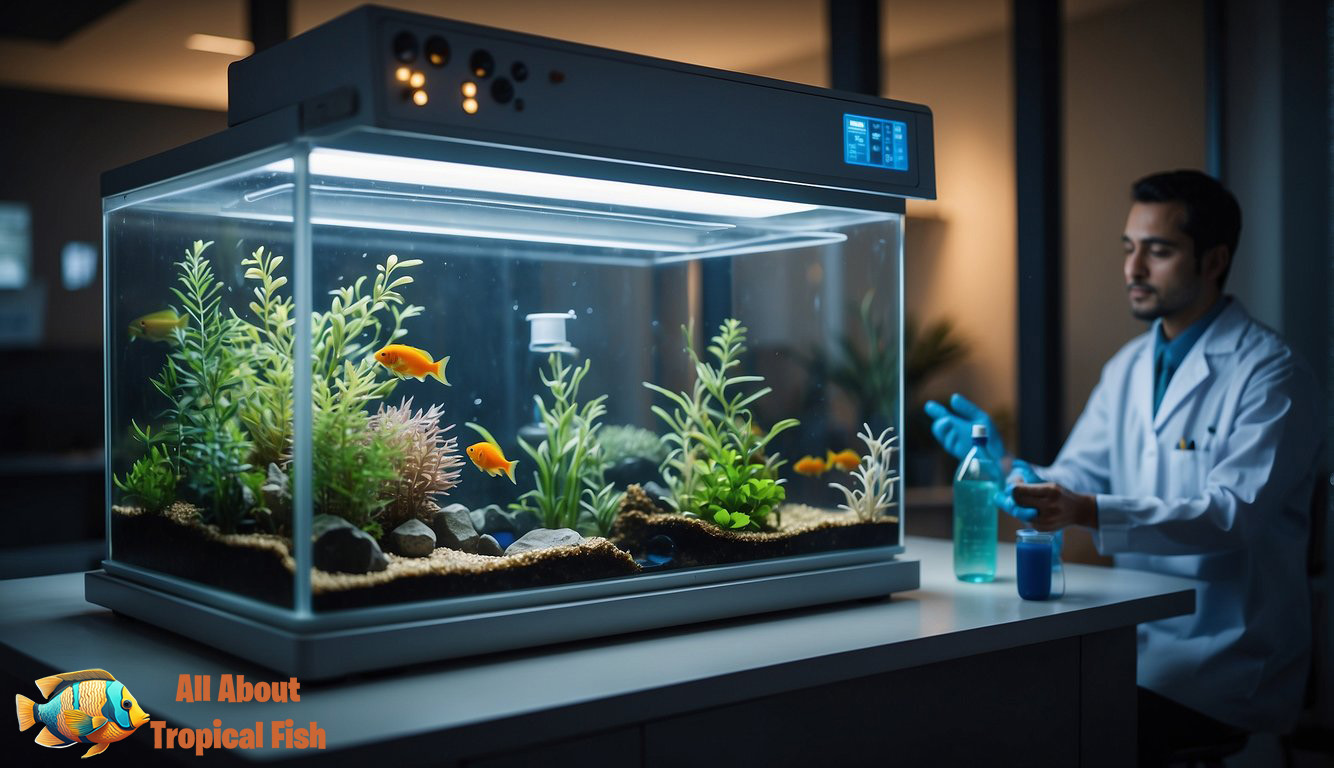
Keeping a close eye on your fish during the quarantine period is crucial, as it allows you to catch any potential health issues early on. Timely identification and treatment of diseases can prevent these problems from affecting your main aquarium. Here’s how you can monitor and treat health issues in your quarantine tank.
Identifying Signs of Illness
Observing your fish daily is essential in identifying signs of illness. Common symptoms to look out for include:
- Lethargy: Fish that are less active than usual may be sick.
- Appetite Loss: A fish that is not eating could indicate a health issue.
- Abnormal Swimming: Watch for erratic swimming or fish that are rubbing against objects, which could suggest irritation or external parasites.
- Physical Changes: Look for discoloration, white spots, fuzzy patches, or wounds on the fish’s body.
Quarantine Medications and Treatments
If you suspect an illness, having a range of quarantine medications on hand is beneficial. Treatments to consider keeping in your aquarium medicine cabinet include:
- Broad-Spectrum Treatment: Products like Fritz Maracyn or Fritz Paracleanse can be effective against a variety of pathogens.
- Targeted Medications: Depending on the disease, you may require medication specific to fungal, bacterial, or parasitical infections. Consult with your local fish store for recommendations.
Always follow the dosage instructions carefully, and fully complete the treatment course to ensure effectiveness.
Preventing Cross-Contamination
One of the most important aspects of quarantine is preventing cross-contamination from the hospital tank to your main tank. Here are some tips to minimize risks:
- Separate Equipment: Use different nets, siphons, and containers for your quarantine tank to avoid transferring pathogens.
- Hand Washing: Always wash your hands thoroughly after handling the quarantine tank or fish within it.
- Duration: Maintain the quarantine treatment for 4-6 weeks to ensure all pathogens are addressed before introducing fish to the main tank.
By being observant and proactive in the treatment of health issues, you can safeguard the wellbeing of your aquarium inhabitants.
Transitioning Fish Back to the Main Aquarium
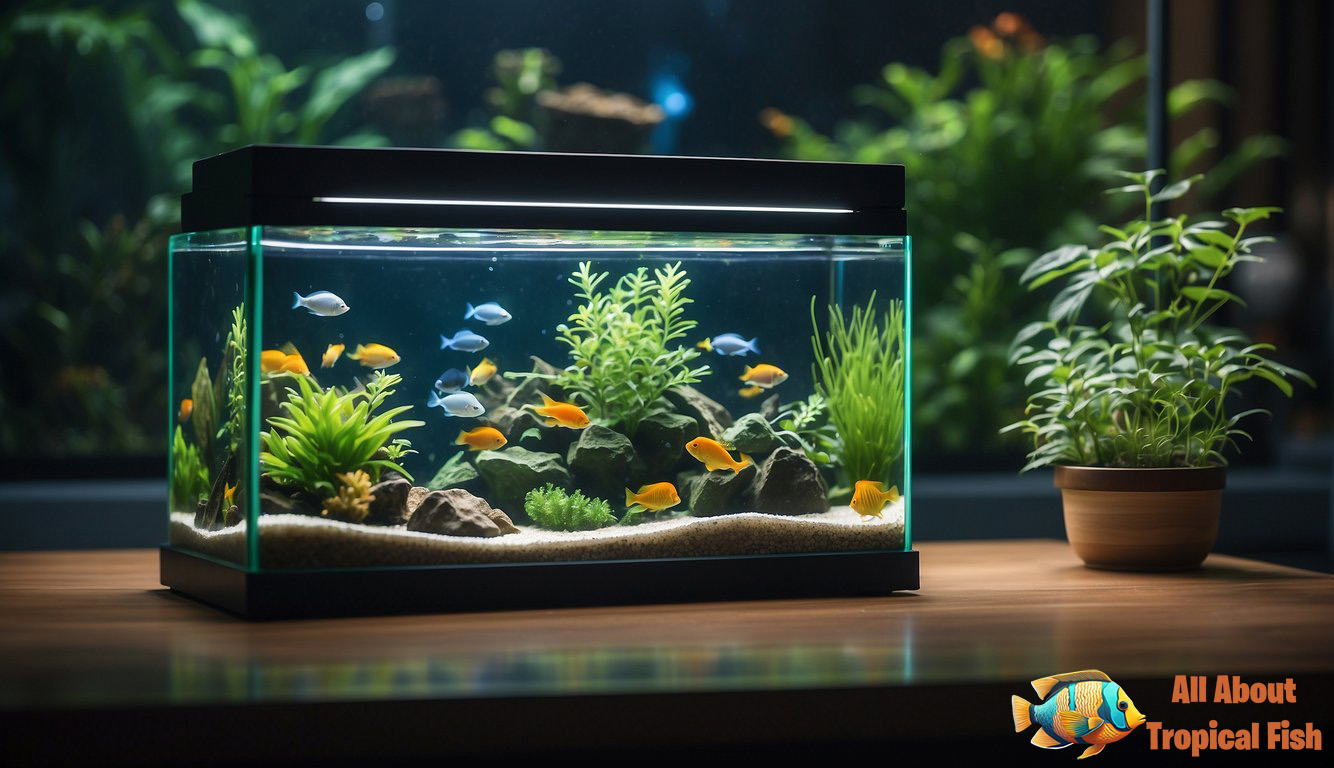
Before reintroducing your fish to the main aquarium, ensure they are fully recovered and the reintroduction is done safely to protect both the recovering fish and its future tank mates.
Ensuring Full Recovery
Monitor your fish closely in the quarantine tank until all signs of disease have disappeared. Full recovery often requires treatment to be completed and a period of observation to ensure no symptoms reoccur. Record any medications or treatments used, and confirm that the fish has been free of symptoms for a suitable period, typically at least one week.
- Review treatment: Confirm completion of any prescribed treatment courses.
- Observe: Keep an eye on the fish regularly for any indication of lingering diseases.
- Isolation Duration: Maintain the quarantine period, usually between 4-6 weeks, to verify health stability.
Reintroduction Protocol
Once you’re confident that your fish is disease-free, carefully plan their move back to the main tank.
- Equalize Water Parameters: Ensure the temperature and pH levels of the quarantine tank closely match those of the main aquarium to minimize stress.
- Acclimatize Your Fish: Slowly introduce your fish to the main tank’s water.
- You can do this by adding small amounts of water from the display tank to the quarantine tank over a period of an hour.
- Transfer Fish Without Mixing Waters: Use a net to transfer your fish to avoid mixing quarantine water with your main aquarium.
- Monitor Post-Transition: Keep a close watch on the reintroduced fish and other tank mates for any unusual behavior or signs of stress in the following days.
By adhering to these steps, you can ensure a smooth and safe transition back to the main tank, promoting a healthy environment for all your aquatic pets.
Accessories for Fish Comfort and Security
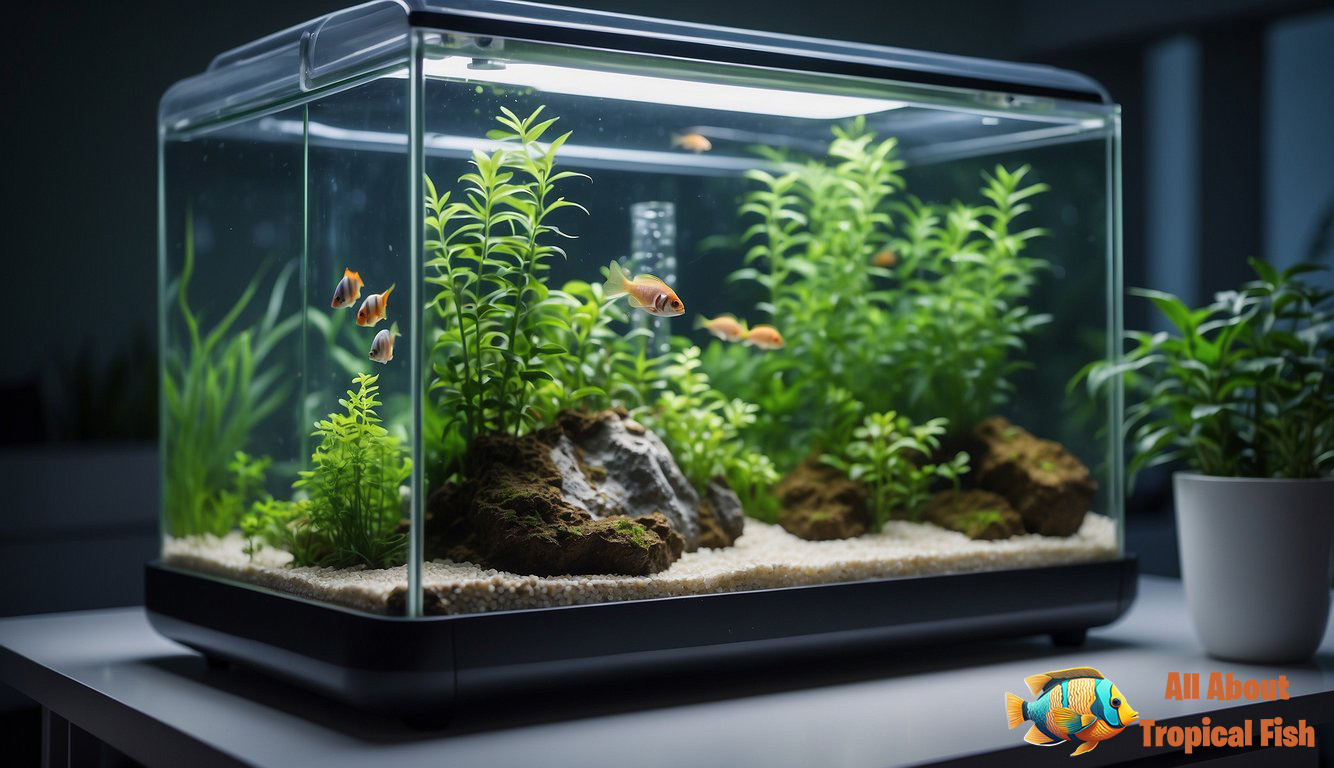
The right accessories can provide the necessary hiding places and shelter, offering a secure haven for your fish while they’re isolated.
Providing Hiding Places and Shelter
To ensure your fish feel safe, adding hiding places is essential. These can be simple objects like PVC pipes or terracotta pots. Fish tend to stress less when they have an area to retreat to.
- Plants: Live or artificial plants not only add to the aesthetic but also serve as excellent hiding spots.
- Aquarium-safe Caves: Commercially available or homemade, these can mimic natural environments.
Remember, the shelter should be easy to clean and should not have sharp edges that could harm your fish.
Types of Substrate and Decor
Substrate can play a significant role in your quarantine tank, both for comfort and for maintaining good water quality.
- Sand: A soft, fine-grained sand substrate is gentle on your fish and can also host beneficial bacteria.
- Gravel: If you prefer, gravel can be used, but ensure it’s smooth and appropriately sized to prevent your fish from swallowing it accidentally.
Decorations like rocks or driftwood can also be included, but they must be thoroughly sanitized to prevent introducing any pathogens into the quarantine environment. Keep decor minimal to facilitate easy cleaning and monitoring of your fish.
Understanding the Lifecycle of Pathogens
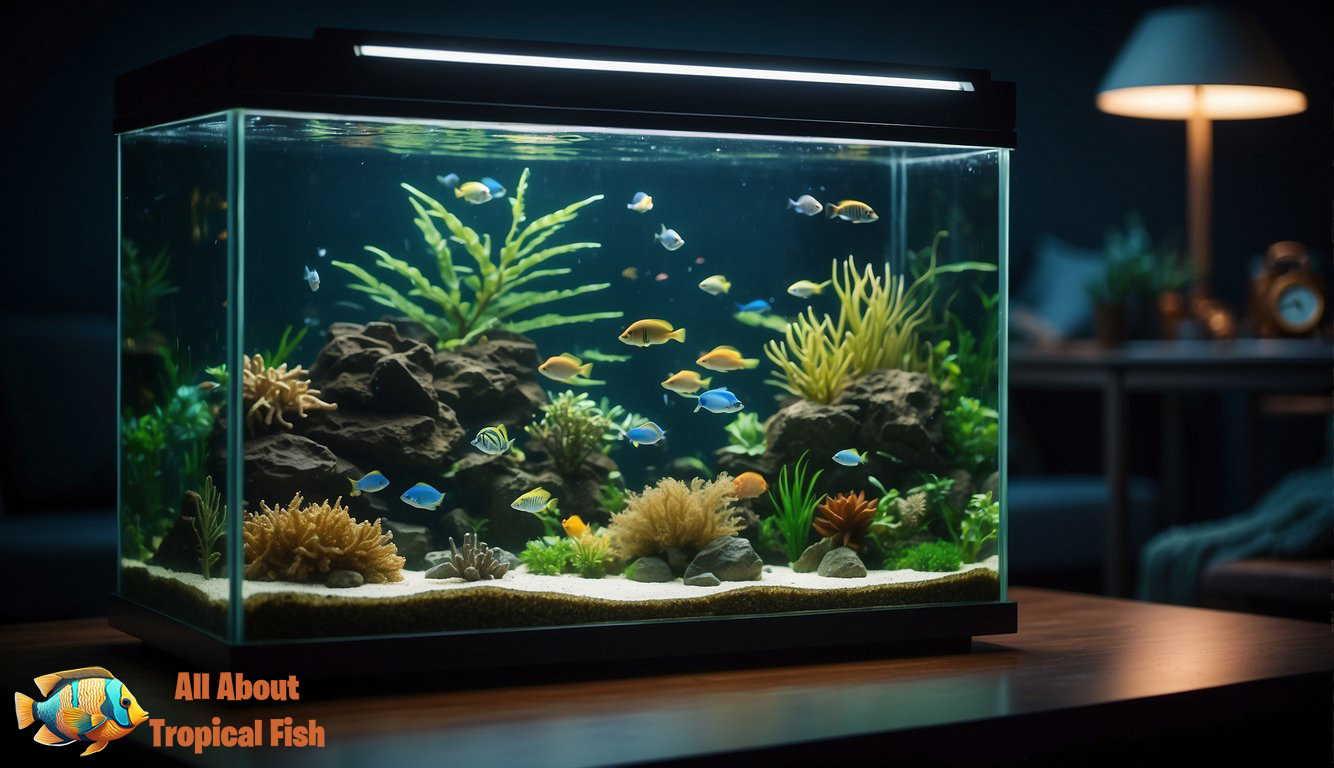
It’s important to understand how aquatic pests and pathogens operate. Knowledge of their lifecycles assists in effective disease management, protecting your aquarium from outbreaks.
Common Aquatic Pests and Parasites
Your aquatic friends might encounter various pests and parasites. Here’s a snapshot:
- Ichthyophthirius multifiliis (Ich): A parasite causing white spots on fish, with a lifecycle including free-swimming and feeding stages.
- Flukes: Parasites that attach to fish’s gills or body, with lifecycles often involving direct transmission from fish to fish.
- Anchor Worms: Visible parasitic crustaceans that embed into fish skin, causing inflammation.
Understanding that each of these pests has a unique lifecycle, you can see why removing a fish from the main tank can prevent the spread of disease.
Effective Disease Management
To combat diseases effectively:
- Isolation: Quickly separate infected fish into a quarantine tank to disrupt the disease transmission.
- Medication: Apply targeted treatments based on the specific pathogen without affecting the main tank.
- Environmental Control: Adjust the quarantine tank conditions to halt the lifecycle of the parasite or pest.
Remember, by tackling these entities during the vulnerable stages of their lifecycles, you are more likely to achieve a disease-free aquarium.
Creating an Optimal Feeding Routine
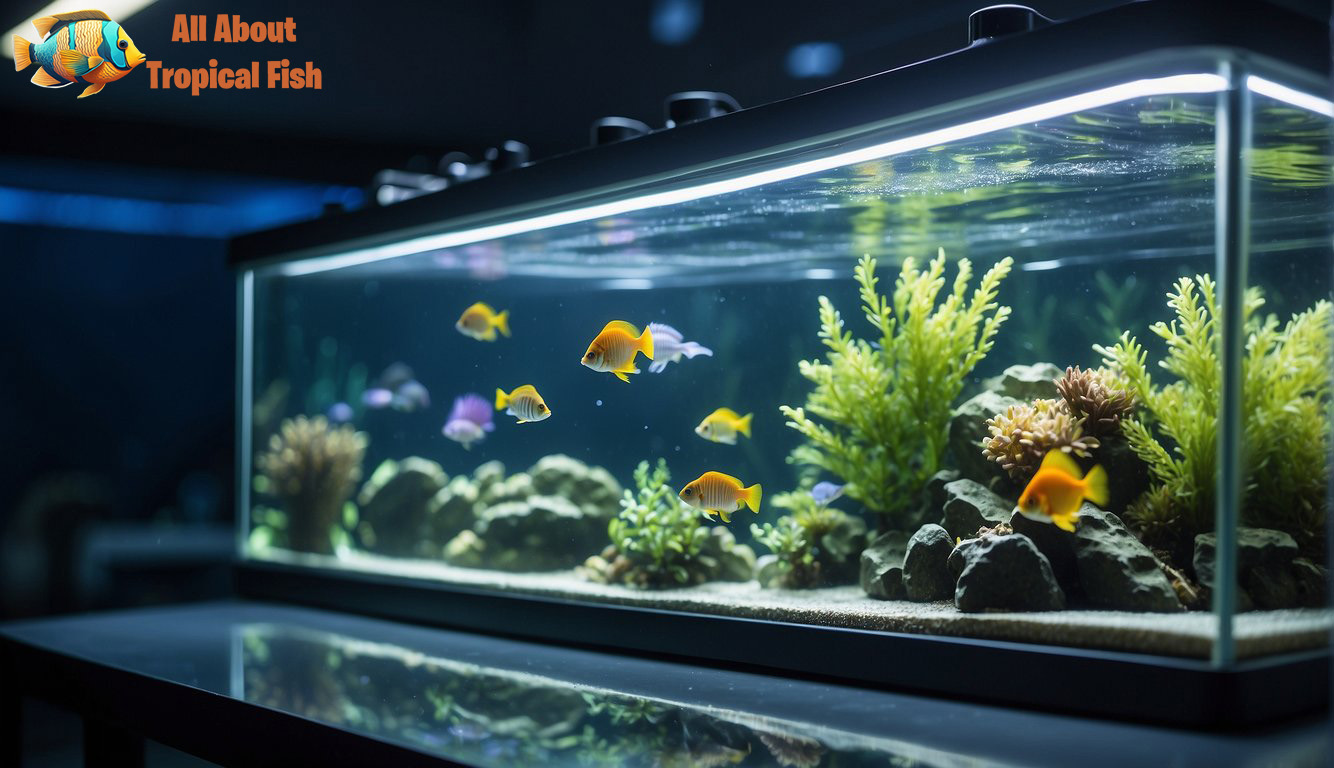
Establishing an optimal feeding routine is crucial for the health of your quarantined fish or invertebrates. Proper nutrition aids in strengthening their immune system and adapting to the new environment.
Selecting the Right Diet
To ensure your aquatic pets thrive, choosing a diet tailored to their specific species and breed is essential.
- New Fish and Invertebrates: Research the natural diet of your new arrivals. For instance, carnivorous fish benefit from high-protein foods, while herbivores require an algae-based diet. Invertebrates may have specialized diets; snails often feed on algae wafers, while some invertebrates may need a mix of plant matter and protein.
- Fry: These young fish need small, easily digestible food, such as finely ground flake foods or specialty fry foods.
- Snails: Provide a calcium-rich diet to support shell growth, which can include specific snail foods or blanched vegetables.
Consider offering a variety of foods to provide a well-rounded diet including frozen foods or live feed for added nutrients and to encourage natural foraging behavior.
Frequency and Amount of Feeding
Your quarantine tank’s feeding schedule should mimic the natural eating habits of the fish or invertebrates as much as possible.
- Frequency: Most fish do well with being fed once or twice a day. Maintaining a consistent schedule establishes a routine for the quarantined animals.
- Amount: As a general rule, only feed what they can consume within a few minutes to prevent overfeeding and minimize the risk of water contamination.
For precise feeding, consider using a table to keep track:
| Species | Food Type | Frequency | Amount (per feed) |
|---|---|---|---|
| New Fish | Flake / Pellets | Twice a day | As much as consumed in 3 minutes |
| Invertebrates | Algae Wafers | Once a day | Half a wafer |
| Fry | Fry Food | Twice a day | Pinch |
| Snails | Blanched Veggies | Every other day | Small piece |
Adjust these guidelines as necessary to cater to the specific needs of your aquatic pets in quarantine.
Common Mistakes to Avoid
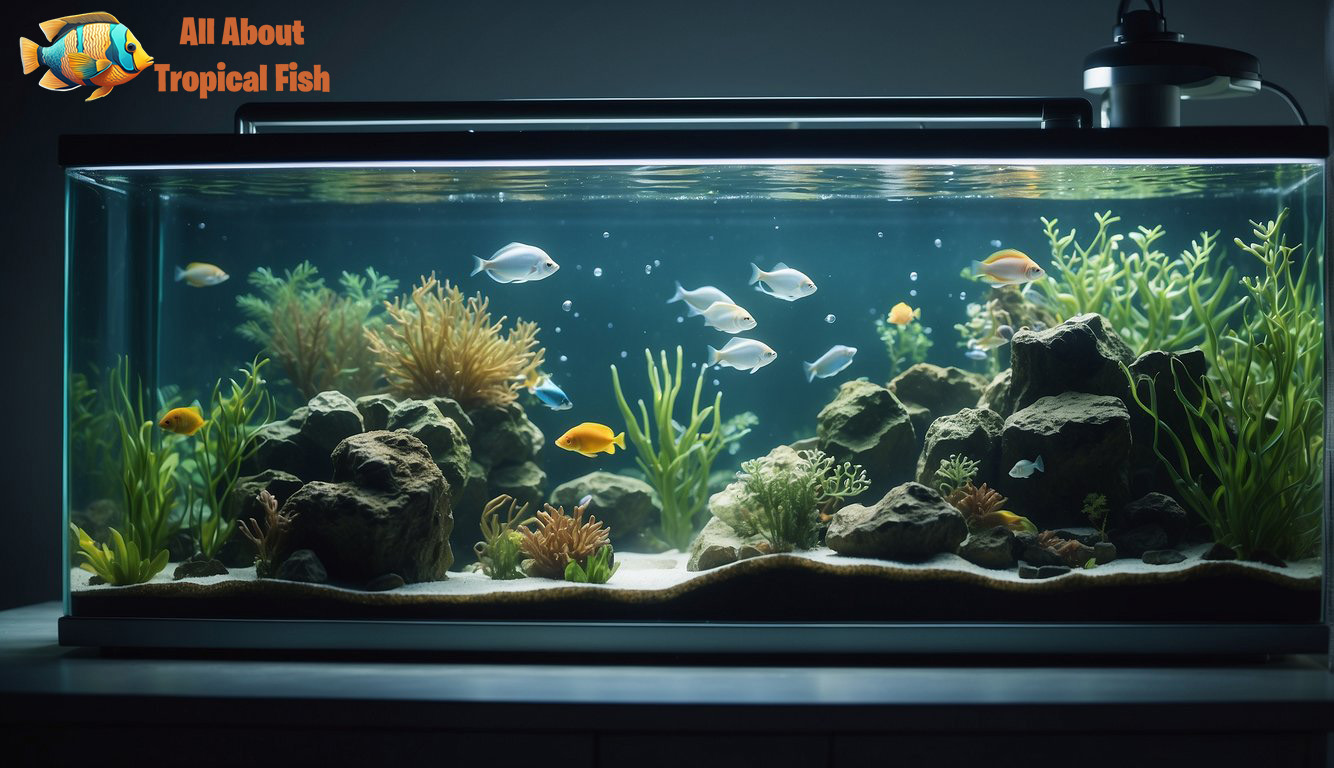
Setting up a quarantine tank for your new fish is important, but common errors can undermine its purpose. You’ll want to particularly ensure you don’t overcrowd the space or misuse medications, and never neglect the importance of strict quarantine procedures.
Overcrowding and Overmedication
Overcrowding:
- Stress: Squeezing too many fish into a limited space can increase stress levels, making them more susceptible to diseases.
- Observation Difficulties: Crammed conditions can hinder your ability to monitor each fish for signs of illness.
- Reasons to Avoid: Stress can weaken fish, leading to disease outbreaks.
Overmedication:
- Only use the necessary medications for the specific issues you are treating.
- Avoid using prophylactic medication without a clear reason, as it can harm the beneficial bacteria and the fish.
Ignoring Quarantine Protocols
Quarantine Duration:
- Maintain a quarantine period of 4-6 weeks to allow enough time for signs of illness, like parasites, to manifest.
Cross Contamination:
- Prevent cross contamination by using separate equipment for the quarantine tank.
- Always wash your hands before and after handling anything within the quarantine setup.
Observation:
- Dedicate time to observe your quarantined fish daily for any behavioral changes or physical symptoms of stress and disease.
By avoiding these common missteps, you protect not only the health of your new fish but also the well-being of your existing aquatic community.



Leave a Reply